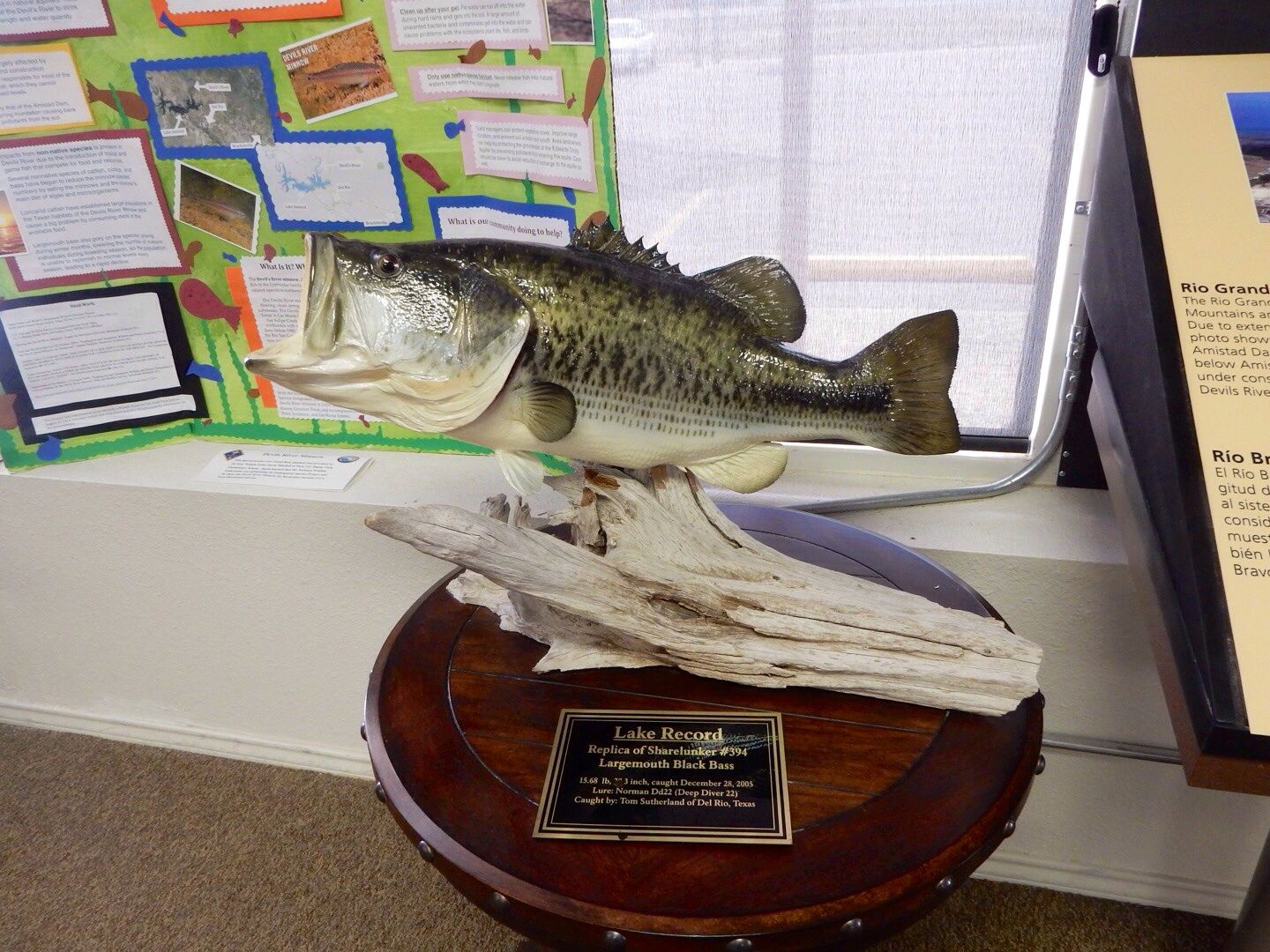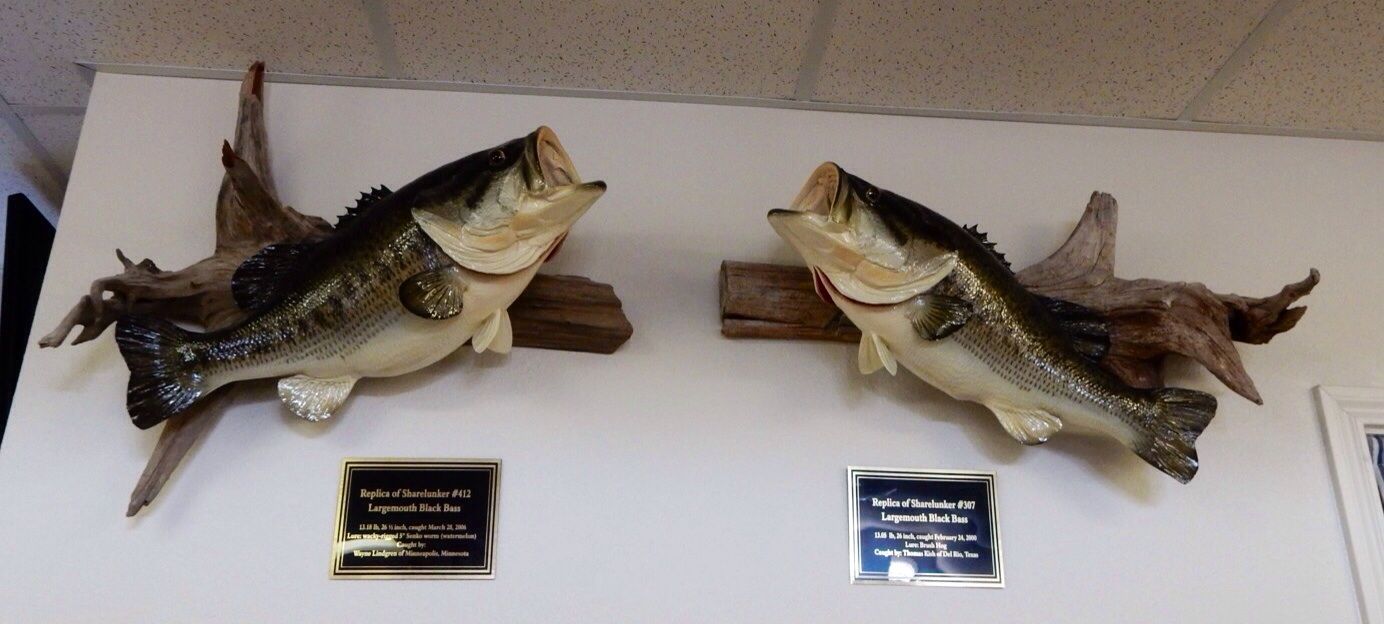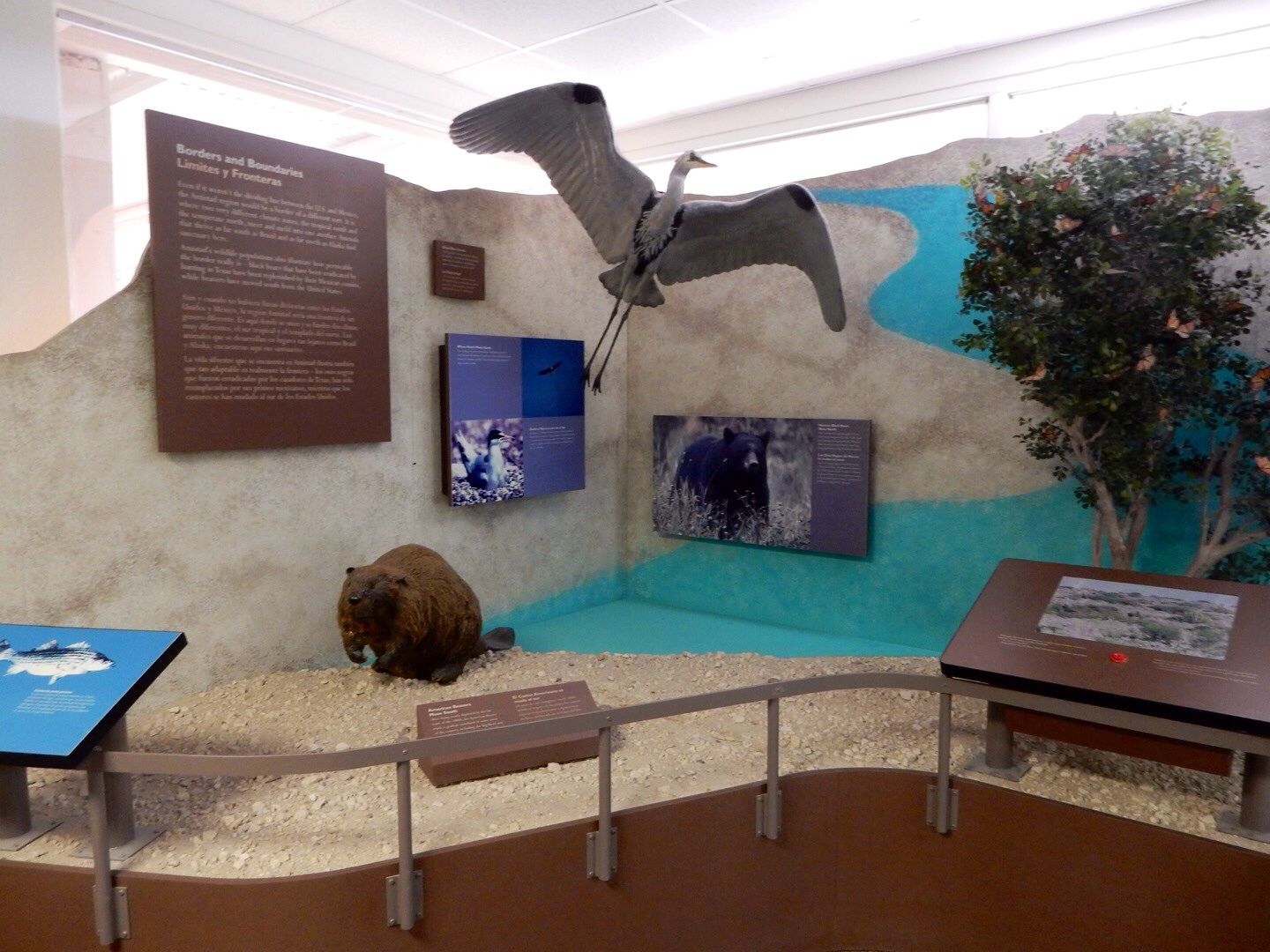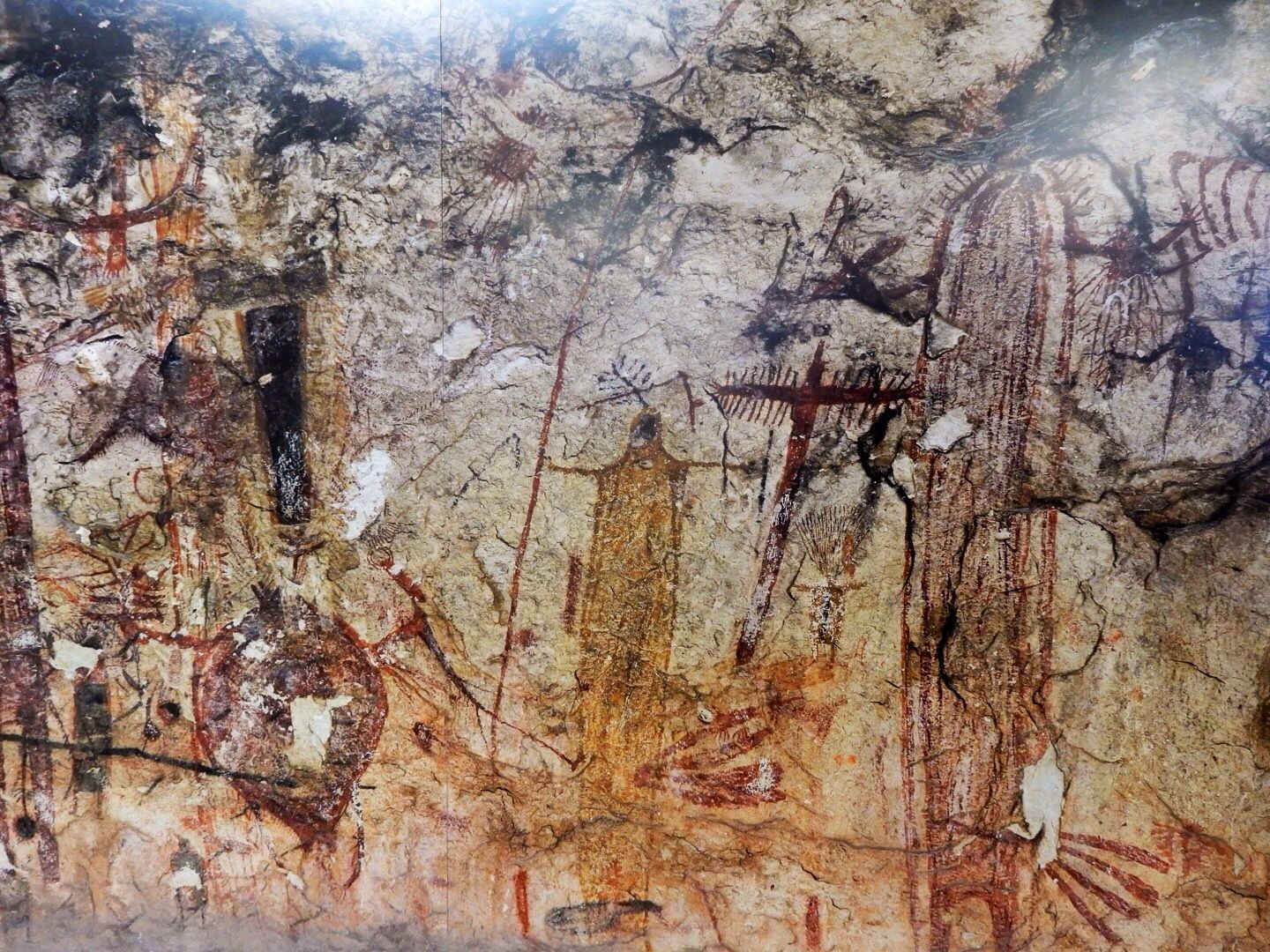Managed by the National Park Service, Amistad is on the U.S. - Mexico border. The recreational opportunities here include water sports, fishing, birding, canoeing, hiking, bow hunting, and viewing archeological sites. The reservoir was created for flood control, power generation, water storage, and recreation in 1969 when the Amistad Dam (that connects the U.S. and Mexico) was completed. The land on the U.S. side was turned over to the National Park Service for management in 1990. Three rivers are part of the area: the Rio Grande (for 81 miles), Pecos River (14 miles), and Devils River (25 miles).
The lake is famous for its world-class fishing (bass, crappie, catfish, alligator gar). Here's a replica of the largest widemouth bass ever caught (thus far!) and some other large specimens, as well.
Other exhibits describe wildlife in the area. Here's one of them.
Evidence of Native Americans who lived in this area for thousands of years can be found in several archeological sites. Some of the oldest pictographs in North America can be found in the Panther Cave that is jointly managed by the Seminole Canyon State Park and Armistad. It is only accessible by boat. Here are some photos of the 100' long cave panel that contains figures 18' high!
We obtained a map of various trails that we plan to explore. There is no admission for for hiking in the park. Some activities require a $5/day charge. Fishing requires a license. For additional information about Armistad, check out their website.
Website: www.nps.gov/amis
For more information about fishing at Lake Amistad including record catches, check out this website.
Website: www.fishlakeamistad.com






No comments:
Post a Comment